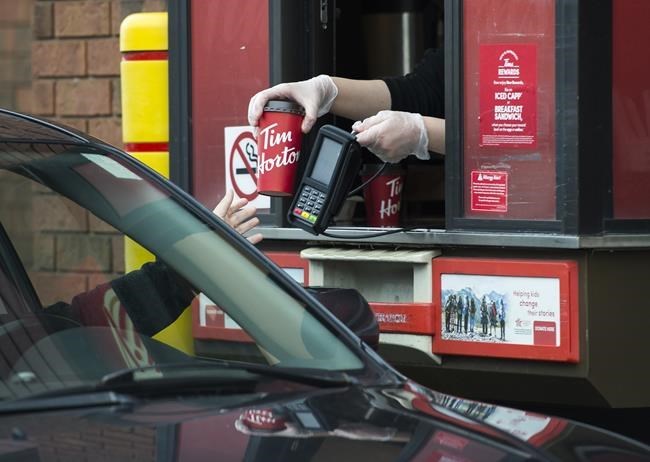Canada's top coffee and doughnut chain posted a strong rebound in sales in its latest quarter but rising commodity prices and high demand for restaurant workers threaten to dampen growth as the economy reopens from COVID-19 lockdowns.
The parent company of Tim Hortons said Friday profits more than doubled in its second quarter as revenues across its brands — including Popeyes and Burger King — jumped a whopping 37 per cent.
But Restaurant Brands International Inc., the fast food holding company behind all three restaurants, said inflationary pressure on goods and wages could challenge the pandemic recovery.
"The restaurant industry, like many other industries, is facing rising commodity costs and wage inflation," Restaurant Brands CEO José Cil said during a conference call with analysts.
"Staffing continues to be a challenge," he said. "While the situation is evolving daily, we're working closely with our franchisees to provide tools and share best practices, including recruiting and hiring initiatives, employee retention programs and technologies that simplify the hiring process."
The company is also planning a national media campaign to help support recruiting efforts in Canada, Cil said.
Restaurant Brands chief corporate officer Duncan Fulton said labour shortages are emerging at the company’s restaurants globally, including in Canada.
In addition to a national hiring campaign set to launch in the coming weeks, he said the company is working with governments to shine a light on the urgent need for more labour, including access to temporary foreign workers.
“We’re seeing widespread labour shortages in the broader restaurant industry and Tim Hortons owners are working through that just like every other restaurant,” Fulton said in an interview.
“A lot of our franchisees are working pretty long shifts themselves in the restaurants to work the drive-thrus, help customers and help fill (scheduling) holes.”
As for whether the restaurant will increase pay to attract more workers, he said franchisees currently offer competitive wages.
“From a wage rate point of view, it's a very competitive market out there,” Fulton said, noting that the same pool of labour available to Tim Hortons could also work for other restaurants and retailers, keeping wages competitive.
Meanwhile, as for the rising cost of goods like coffee beans, Restaurant Brands has “advanced procurement and sourcing mechanisms” that help smooth out the ups and downs of the commodity market, he said.
“We have a pretty advanced system of sourcing coffee beans,” Fulton said. “As we see forward prices for coffee moving up and down, it gives our team the ability to adjust and smooth out some of the impacts.”
For now, Tim Hortons isn’t planning any across-the-board menu price increases to address cost pressures.
“There's nothing widescale planned at this point,” Fulton said. “There's always kind of market-by-market micro adjustments that are in keeping with our competitors.”
He added: “We're pretty careful whenever there's a price adjustment to make sure that it's competitive and meets the expectations of guests.”
Restaurant Brands, which reports in U.S. dollars, said its net income attributable to shareholders was US$390 million or 84 cents per share in the second quarter, up from US$163 million or 35 cents per share a year earlier.
Adjusted profits reached US$358 million or 77 cents per share, up from US$154 million or 33 cents per share in the second quarter of 2020.
Revenues were US$1.44 billion, up from US$1.05 billion in the prior year quarter, with Tim Hortons same-store sales increasing 27.6 per cent a year after decreasing 29.3 per cent. Total system-wide sales were US$8.9 billion, up from US$6.8 billion.
The company says global system-wide sales growth was four per cent higher than in 2019, before COVID-19 caused restaurant closures, while 378 net new locations were added in the first half of the year.
This report by The Canadian Press was first published July 30, 2021.
Companies in this story: (TSX:QSR)
Brett Bundale, The Canadian Press
Note to readers: This is a corrected story. A previous version said same-store sales were 7.6 per cent instead of 27.6 per cent.

